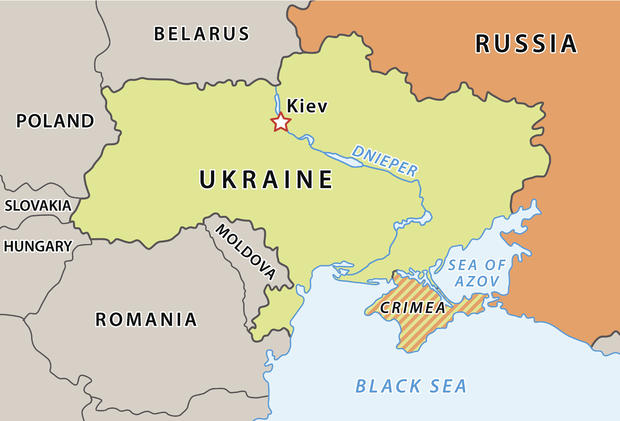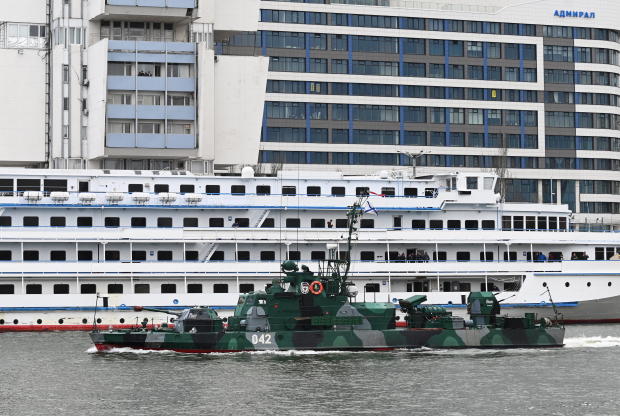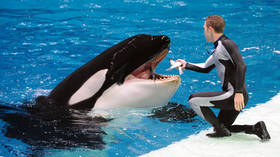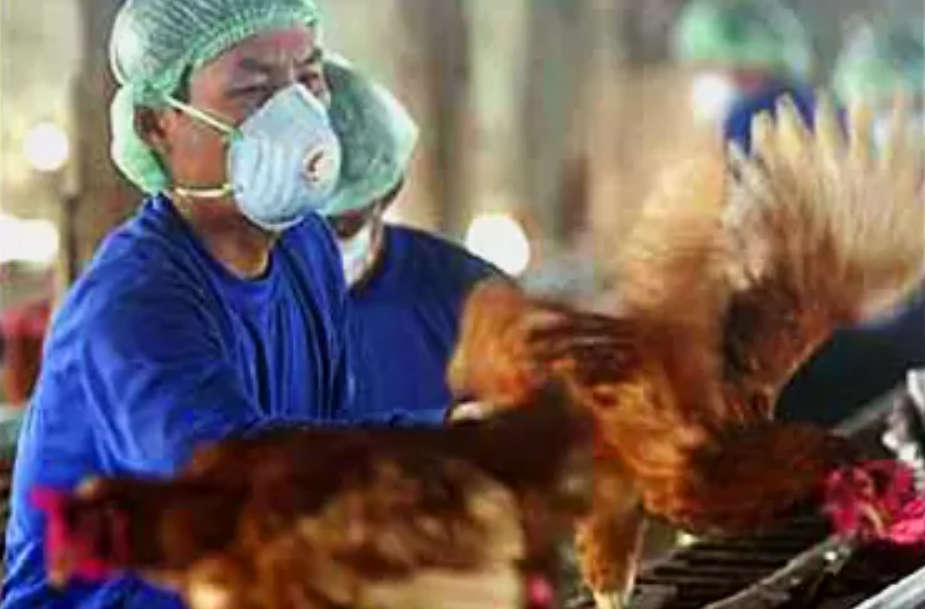By Simone McCarthy and CNN’s Beijing Bureau – 1h agoFollow
React|186
In public statements and at international summits, Chinese officials have attempted to stake out a seemingly neutral position on the war in Ukraine, neither condemning Russian actions nor ruling out the possibility Beijing could act as a mediator in a push for peace.
© Ueslei Marcelino/ReutersRussian President Vladimir Putin and Chinese leader Xi Jinping walk down the stairs as they arrive for a BRICS summit in Brasilia, Brazil in 2019.
But while its international messaging has kept many guessing as to Beijing’s true intentions, much of its domestic media coverage of Russia’s invasion tells a wholly different story.
There, an alternate reality is playing out for China’s 1.4 billion people, one in which the invasion is nothing more than a “special military operation,” according to its national broadcaster CCTV; the United States may be funding a biological weapons program in Ukraine, and Russian President Vladimir Putin is a victim standing up for a beleaguered Russia.
© STR/AFP/Getty ImagesResidents watch a TV screen showing news about Ukraine at a shopping mall in Hangzhou, in China’s eastern Zhejiang province on February 25, 2022.
To tell that story, major state-run news media outlets — which dominate China’s highly censored media space — have been largely echoing Russian state media stories or information from Russian officials.
A CNN analysis reviewed nearly 5,000 social media posts from 14 Chinese state media outlets during the first eight days of Russia’s invasion posted onto China’s Twitter-like platform, Weibo. The analysis found that of the more than 300 most-shared posts about the events in Ukraine — which were each shared more than 1,000 times — almost half, about 140, were what CNN classified as distinctly pro-Russian, often containing information attributed to a Russian official or picked up directly from Russia’s state media.
© Kevin Frayer/Getty ImagesA large Ukrainian flag with the slogan “We Stand With Ukraine” written on it in Chinese characters is seen on the outside wall of the Canadian Embassy on March 1, 2022 in Beijing, China.
The analysis, which focused on stories that got the most play on social media, may not be representative of all posts shared by state media outlets on Weibo. But it provides a snapshot of the state media-produced information that is most visible to the more than half a billion monthly users on the popular platform.
Experts Opinion: This New $49 Smart Watch Is must For Seniors

It’s not clear the extent to which these posts may be explicitly the result of a coordinated propaganda campaign between the two countries, but it is consistent with an ongoing pattern in which Russian and Chinese media have amplified and reinforced their often-interchangeable talking points on issues such as the treatment of Russian dissidents, Hong Kong pro-democracy protests, the origins of the Covid-19 pandemic, or the supposed American role in fomenting “color revolutions” against authoritarian regimes.
Such mutual reinforcement has also spilled over into the extensive overseas and English-language propaganda operations that both countries have built to promote their views globally — a route made more important with Russia’s state media outlets being banned on air and online in parts of the West.
In China’s top-down government-controlled media environment, all state-affiliated content is vetted and issued in accordance with government directives. That China has chosen to follow Russia’s lead in deliberately mischaracterizing the war only serves to underline Beijing’s closeness to Moscow — and almost makes a mockery of China’s self-proclaimed impartiality in helping to engage with Russia and bring an end to the violence.
© Roman Pilipey/EPA/ShutterstockChinese Foreign Ministry spokesman Zhao Lijian at a daily media briefing in Beijing, China, March 19, 2021.
The playbook
Russian assurances that civilian sites will not be targeted — despite extensive evidence to the contrary, descriptions of Ukrainian soldiers using “Nazi” tactics, and misinformation regarding the whereabouts of Ukrainian President Volodymyr Zelensky are all stories that have been funneled from Russian sources into China’s enclosed social media ecosystem — where many Western news outlets are blocked — by its state media outlets in recent days.
That dynamic was at play on Monday morning, when China’s state broadcaster CCTV released a package in its morning newscast highlighting Moscow’s erroneous claim that Washington had funded the development of biological weapons in Ukrainian labs. That insinuation is used to support the narrative that Ukraine — characterized by Moscow as an American puppet state — threatens Russia, and not the other way around.
The source? Russian Defense Ministry Spokesman Igor Konashenkov, who on Sunday said Russian forces uncovered “evidence” of the “hasty measures to conceal any traces of the military biological program finance(d) by the US Department of Defense,” and referenced documents he said detailed the destruction of hazardous pathogens at these facilities on the order of the Ukrainian Health Ministry.
In a statement on Twitter Wednesday, White House press secretary Jen Psaki pushed back on “Russia’s false claims about alleged US biological weapons labs and chemical weapons development in Ukraine” and noted the “echoing” of those “conspiracy theories” by Chinese officials.
“This is preposterous. It’s the kind of disinformation operation we’ve seen repeatedly from the Russians over the years in Ukraine and in other countries, which have been debunked, and an example of the types of false pretexts we have been warning the Russians would invent,” Psaki said, adding that the US was “in full compliance” with its obligations under the Chemical Weapons Convention and the Biological Weapons Convention and “does not develop or possess such weapons anywhere.”
“Now that Russia has made these false claims, and China has seemingly endorsed this propaganda, we should all be on the lookout for Russia to possibly use chemical or biological weapons in Ukraine, or to create a false flag operation using them. It’s a clear pattern,” Psaki said.
The subject was also raised in a Senate hearing on Tuesday, when Undersecretary of State for Political Affairs Victoria Nuland, asked if Ukraine had biological weapons, said it has biological research facilities, which the US was concerned Russian forces may be seeking to control.
“We are working with the Ukrainians on how they can prevent any of those research materials from falling into the hands of Russian forces, should they approach,” Nuland said.
Minutes after the CCTV report aired, an affiliated news outlet released an online post repeating the claims from Russia’s Defense Ministry and started a related hashtag on Weibo, which began trending. The hashtag was viewed more than 45 million times over a period of hours that day.
The next day, after Russia doubled down on the biological weapons claims with further statements, without evidence, CCTV released a new television segment, which was again shared by prominent state media outlets on Weibo, gaining further traction.
The story then moved into the narrative of China’s officials when a state media reporter at a regular Foreign Ministry press briefing asked a question about the laboratories, prompting the spokesperson to read a lengthy prepared response that repeated Russian disinformation.
“We once again urge the US to fully clarify its biological militarization activities both inside and outside its borders and accept multilateral verification,” spokesperson Zhao Lijian said.
Within hours, at least 17 state media outlets, including CCTV, Xinhua, and the People’s Daily, posted Zhao’s response on Weibo, where the topic racked up more than 210 million views. A related hashtag rose to be the top trending topic on Weibo by the following afternoon.
The pattern is just one example of a playbook that enables China to cover the war through the lens of Russian rhetoric and disinformation. Other examples include stories, such as repeated false claims that Zelensky fled the Ukrainian capital, Kyiv — sourced to a single Russian lawmaker, which were picked up and amplified by both Chinese and Russian state media outlets on their domestic and international platforms.
A CNN analysis sought to understand how large a role such stories play in China’s tightly controlled media ecosystem, first by combing through nearly 5,000 social media posts from the Weibo accounts of 14 of China’s most influential state media outlets, focusing on the first eight days of the invasion and news about the events in Ukraine.
Next, CNN analyzed which of those posts were the most highly engaged with, identifying more than 300 posts shared on Weibo more than 1,000 times. Of those more than 300 posts, an analysis found that nearly half showed Russia in a positive light — a category CNN defined as news sourced solely from Russian officials or Russian media, content that describes Ukraine negatively, misinformation about Zelensky, or pro-Putin coverage.
While about 140 posts showed Russia in a positive light, the analysis identified fewer than 15 posts that portrayed Ukraine positively.
A look at other characterizations showed only around 90 of these posts were neutral — for example, purely factual reports from reliable sources, news about humanitarian aid or updates on the evacuation of Chinese citizens from Ukraine.
Just over a third were what CNN classified as anti-West or anti-US, for example: stories airing views that Russia was pushed to action in Ukraine by the expansion of NATO, or criticizing Western media coverage of the crisis.
CNN reporters classified some posts into more than one category. A look at the distribution shows posts that depicted Russia in a positive light were more frequent than any other category.
Because CNN only studied posts with high engagement, the findings may not be representative of all posts produced by state media.
In response to CNN’s request for comment, the Chinese Foreign Ministry said Thursday the country is a victim of disinformation.
“Some anti-China forces and media have fabricated too many lies, rumors and disinformation about China on issues that include the situation in Ukraine,” it said in a statement. “They have smeared the image of China, poisoned the media environment and misled public worldwide. Such actions are hypocritical and despicable.”
The backdrop
The findings contrast the apparent middle line that China has tried to walk in its international diplomacy.
Though Beijing has stood apart from the Western response to Russia’s invasion, with its diplomats refusing to condemn the invasion, or even call it such, and decrying Western sanctions, it has also frequently repeated that “all countries’ legitimate security concerns” should be addressed.
In a virtual summit with French President Emmanuel Macron and German Chancellor Olaf Scholz on Tuesday, Chinese leader Xi Jinping called for negotiations to bring about “peaceful outcomes” and stressed China’s promises to contribute humanitarian aid to Ukraine.
“There is a difference between the way China talks to the international audience and the way it talks to the domestic audience … for the domestic audience, it’s important to preserve this partnership with Russia, because that’s a political priority for Xi,” said Alexander Gabuev, a senior fellow and the chair of the Russia in the Asia-Pacific Program at the Carnegie Moscow Center.
He points to the increasingly close relationship between China and Russia in recent years, a strategic partnership strengthened, in part, by shared friction with the West.
“So (China’s leaders) need to shape public perceptions about this, and explain why dealing with Russia is morally justified or is the right thing to do — and (China’s media coverage) serves this purpose,” he said.
A glimpse into how China may seek to control its coverage was given in the days prior to the invasion, when an internal directive that was apparently accidentally shared on social media showed Chinese state media outlet Beijing News ordered its employees not to publish news reports that were “negative about Russia or pro-West.” Beijing News did not respond to requests for comment.
Maria Repnikova, director of the Center for Global Information Studies at Georgia State University, said Russia-leaning coverage was in line with historical precedent: “Stories that are critical of Russia or are portraying Russia in an unfavorable manner are generally censored,” she said.
“As a result of that, it is expedient to use Russian state media sources because they’re the ones portraying the (Ukraine) conflict with a more favorable eye or view from the Russian perspective,” she said.
Another sign of this has been which voices have been allowed to thrive on China’s heavily censored social media platforms in the wake of the invasion. There, pro-Russia and anti-Western, nationalistic voices have also dominated, while there has been a suppression of pro-Ukrainian or anti-war messages on platforms and across the media landscape.
One glaring example came Friday, when CCTV broadcast a speech from International Paralympic Committee President Andrew Parsons, at the opening ceremony of the Beijing Paralympic Games, in which many parts of the speech were muffled and were not translated.
The offending context? Parsons’ “message of peace,” in which he did not name Russia or Ukraine but said he was “horrified at what is taking place in the world.”
Those voices from within China who have tried to speak up — including five history professors who penned an open letter voicing their strong opposition to “Russia’s war against Ukraine” — have seen their posts swiftly deleted or social accounts suspended.
“We have seen alternative, critical voices — some subtle critique or attempts to present scenes from the war zone and talk about humanity and empathy toward Ukraine — (but) a lot of these messages have been censored,” said Repnikova.
Social media platforms in China have taken action against extremist nationalist voices in recent weeks, with Sina Weibo “punishing” around 75 accounts and screening out more than 1,500 posts and video-streaming platform Douyin removing over 6,000 illegal videos, according to the state-owned Global Times. But the nationalistic voices that have dominated social media platforms fall in line with what Repnikova describes as “a significant spike in digital nationalism, (with) the US and the West (as) the key target of this nationalistic sentiment.”
Break the monopoly
That nationalist sentiment — fueled by a deep distrust of the US and concern about its role as the leading global power — are a critical part of the glue that has firmed up the Russian and Chinese relationship in recent years.
It’s also filtered in the kinds of media coverage that each have shared overseas, as both Russia and China have sought to deepen their propaganda efforts, launching social media-friendly news brands in English and other languages, like China’s CGTN and RT (formerly Russia Today).
While experts say it’s unclear if top media officials from the two countries are discussing news coverage at an operational level and some official coordination is more symbolic in nature, there is a growing push in recent years for alignment and content-sharing.
A number of content-sharing arrangements exist between Chinese and Russian media outlets, and the shared vision is clear: these outlets together can “break the monopoly of Western media,” as a Global Times report on a China-Russia media forum in 2015 put it.
Fast-forward to the crisis in Ukraine and the upside of that collaboration, for one partner anyway, is clear.
In the European Union, Kremlin-backed media outlets RT and Sputnik were officially banned as of last Wednesday, with companies like Meta, parent of Facebook and Instagram, and Google’s YouTube stepping in to block their content.
But, on China’s channels like CGTN and Global Times, which continue to operate, those Russian talking points are still getting through.
Already this week, posts from those accounts have suggested Ukraine and the US have pro-Nazi leanings, repeated Russian misinformation on the laboratories, and cited Russia denying that it plans to overthrow the existing government in its “special military operation” in Ukraine.

 © Sergei SUPINSKY Przewalski’s horses wander near a forest road in the Chernobyl zone
© Sergei SUPINSKY Przewalski’s horses wander near a forest road in the Chernobyl zone © Jean Christophe VERHAEGEN A potential candidate species for introduction to the Chernobyl area is the European bison
© Jean Christophe VERHAEGEN A potential candidate species for introduction to the Chernobyl area is the European bison © GENYA SAVILOV Chernobyl has also become a haven for elks, and other fauna including wolves
© GENYA SAVILOV Chernobyl has also become a haven for elks, and other fauna including wolves © Sergei SUPINSKY Przewalski’s horses were at one time extinct in the wild but are now thriving in Chernobyl
© Sergei SUPINSKY Przewalski’s horses were at one time extinct in the wild but are now thriving in Chernobyl © Aleksndr Sirota Thirty-five years after the world’s worst nuclear disaster surging flora and fauna have taken over deserted tower blocks
© Aleksndr Sirota Thirty-five years after the world’s worst nuclear disaster surging flora and fauna have taken over deserted tower blocks © Andriy PERUN Down an overgrown country road, three startled wild horses with rugged coats and rigid manes dart into the flourishing overgrowth of their unlikely nature reserve: the Chernobyl exclusion zone.
© Andriy PERUN Down an overgrown country road, three startled wild horses with rugged coats and rigid manes dart into the flourishing overgrowth of their unlikely nature reserve: the Chernobyl exclusion zone.











 (Image: © Shutterstock)
(Image: © Shutterstock) VICKI SMITHGETTY IMAGES
VICKI SMITHGETTY IMAGES